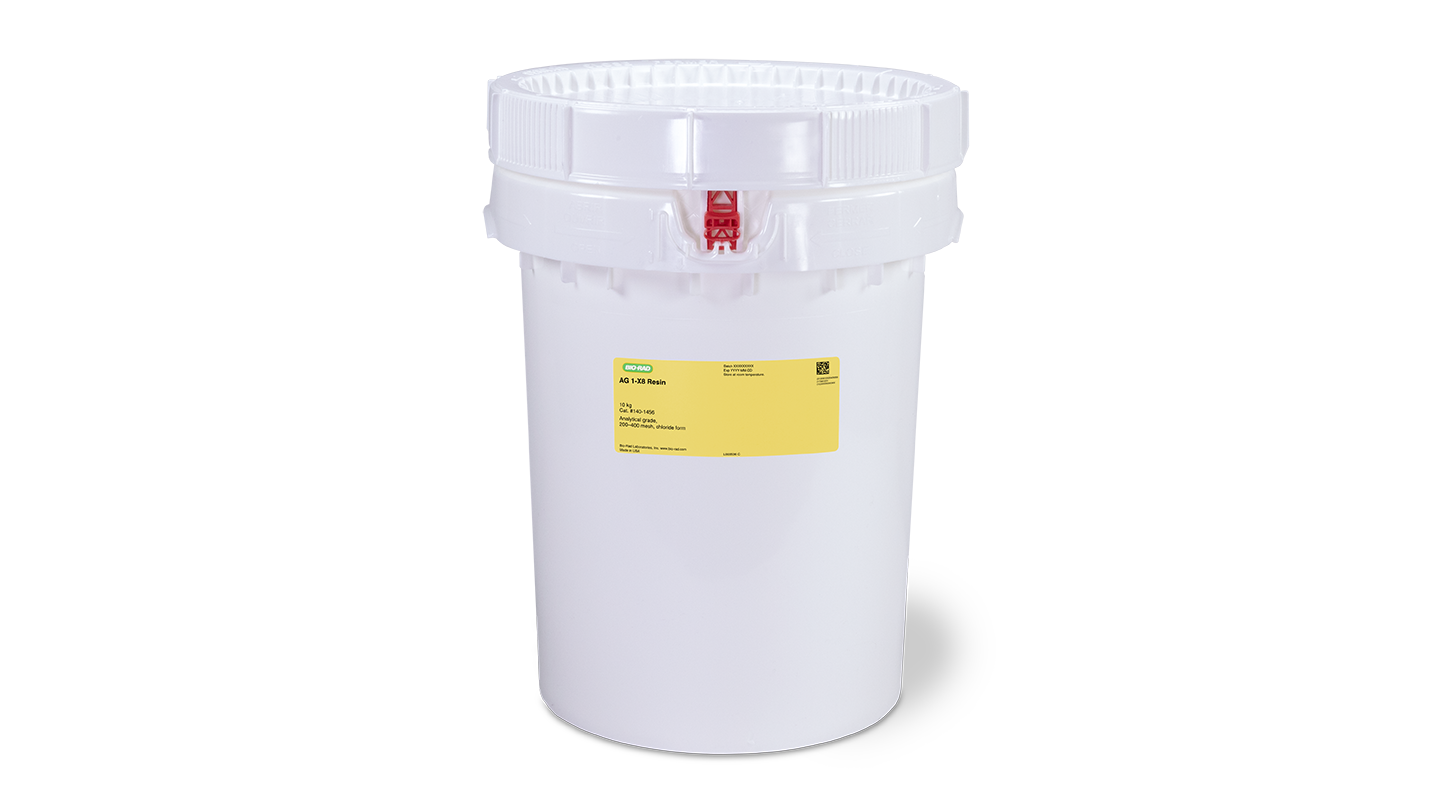
Description
Description
AG (analytical grade) resins are extensively purified to remove both organic and inorganic impurities. They are also sized to consistently give narrow wet mesh ranges, which provide high resolution and excellent reproducibility. AG resins are available as both strong and weak anion and cation exchangers and as mixed-bed ion exchangers. Many are available in several ionic forms and can be converted from one form to another. AG resins are used primarily for the separation of low molecular weight compounds such as inorganic ions, organic acids, nucleic acids, or carbohydrates.
AG 1 and AG 2 resins are strongly basic anion exchangers with quaternary ammonium functional groups attached to the styrene divinylbenzene copolymer lattice. The amount of resin crosslinkage determines the bead pore size. A resin with a lower percentage of crosslinkage has a more open structure permeable to higher molecular weight substances than a highly crosslinked resin. It also has a lower physical resistance to shrinking and swelling, so that it absorbs more water and swells to a larger wet diameter than a highly crosslinked resin of equivalent dry diameter. For example, the lower crosslinked resins, particularly AG 1-X2 2% crosslinked resin, are useful for the sorption and fractionation of relatively high molecular weight substances such as peptides, ribo- and deoxyribonucleotides, and uranium. The higher crosslinked resins, particularly AG 1-X8 8% crosslinked resin, are used for sorption, exchange, and separation of low molecular weight inorganic anions and in applications such as cyclic nucleotide assays and fractionation of organic acids.
AG 2 resin is similar to AG 1 resin, but is slightly less basic and slightly less resistant to oxidation due to differences in the structure of the quaternary functional group. It offers advantages in certain applications. For example, it is capable of separating sugars, sugar alcohols, and glycosides using a step gradient and borate buffers without isomerizing some sugars.
Larger volumes and special packaging for industrial applications are available on request.
More Information
- AG 1, AG 2, and AG 4 Product Information Sheet
- AG 1 and AG 2 Manual
- AG 4 Manual
Related Technologies
Related Products
Ordering
Ordering
items
Use the filters below to refine results!
















10 kg, analytical grade anion exchange resin, hydroxide form, 8% crosslinkage, 20–50 dry mesh size, 300–1,180 µm wet bead size, ~1,000 MW limit


10 kg, analytical grade anion exchange resin, acetate form, 8% crosslinkage, 20–50 dry mesh size, 300–1,180 µm wet bead size, ~1,000 MW limit






500 g, analytical grade anion exchange resin, chloride form, 8% crosslinkage, 20–50 dry mesh size, 300–1,180 µm wet bead size, ~1,000 MW limit

10 kg, analytical grade anion exchange resin, acetate form, 8% crosslinkage, 20–50 dry mesh size, 300–1,180 µm wet bead size, ~1,000 MW limit


10 kg, biotechnology grade anion exchange resin, hydroxide form, 8% crosslinkage, 20–50 dry mesh size, 300–1,180 µm wet bead size, ~1,000 MW limit




Kits & Reagents
Kits & Reagents










